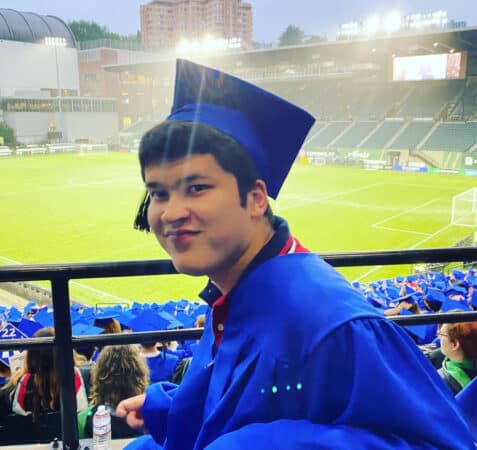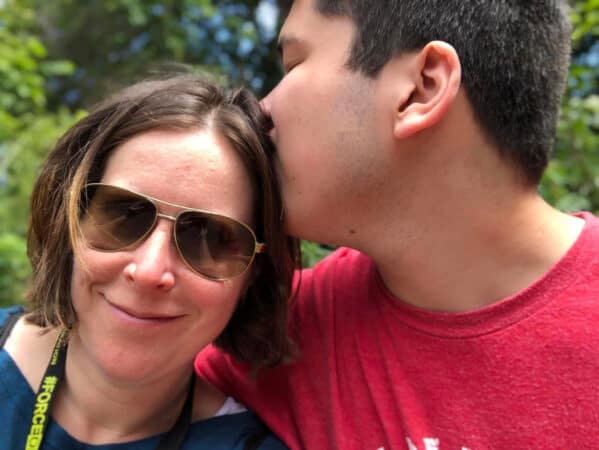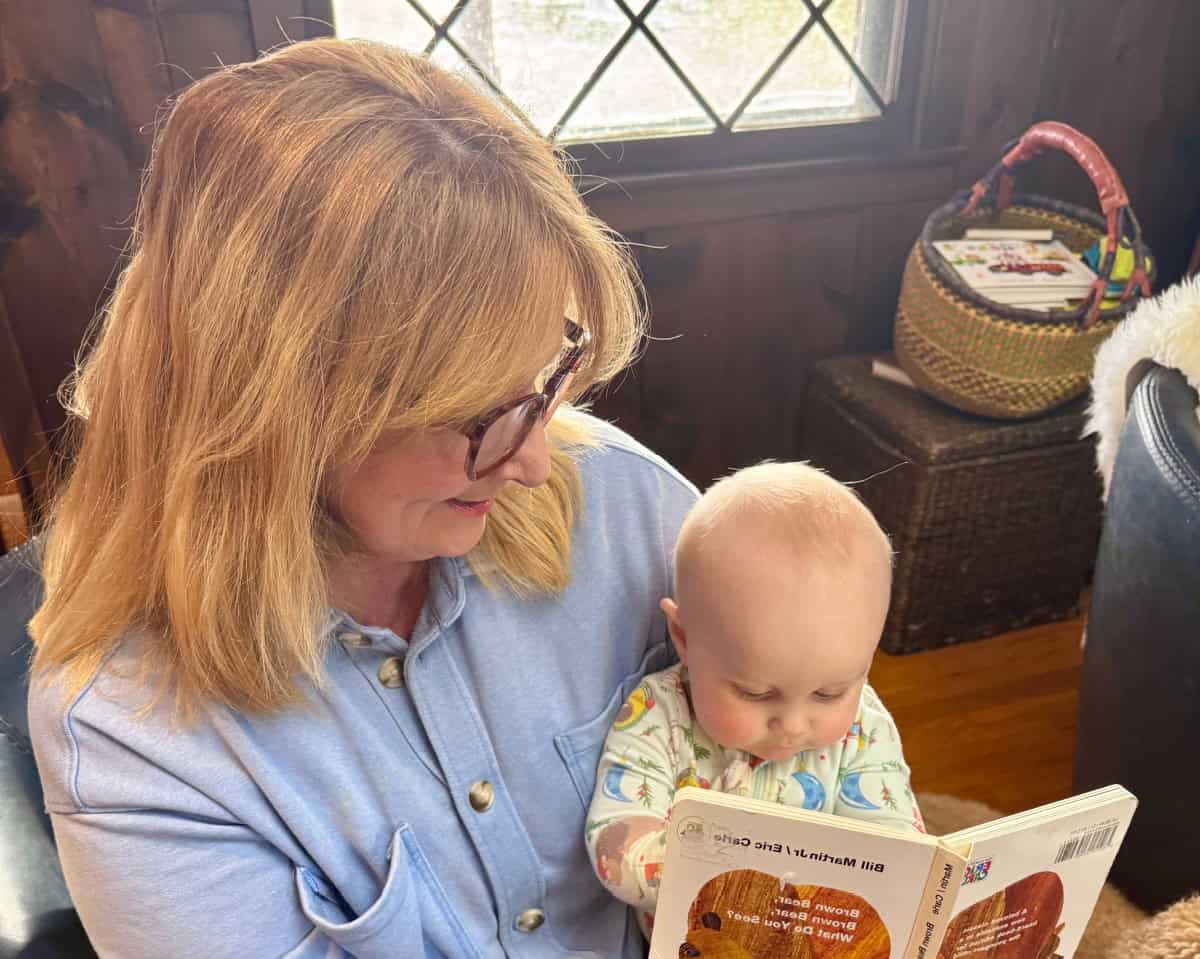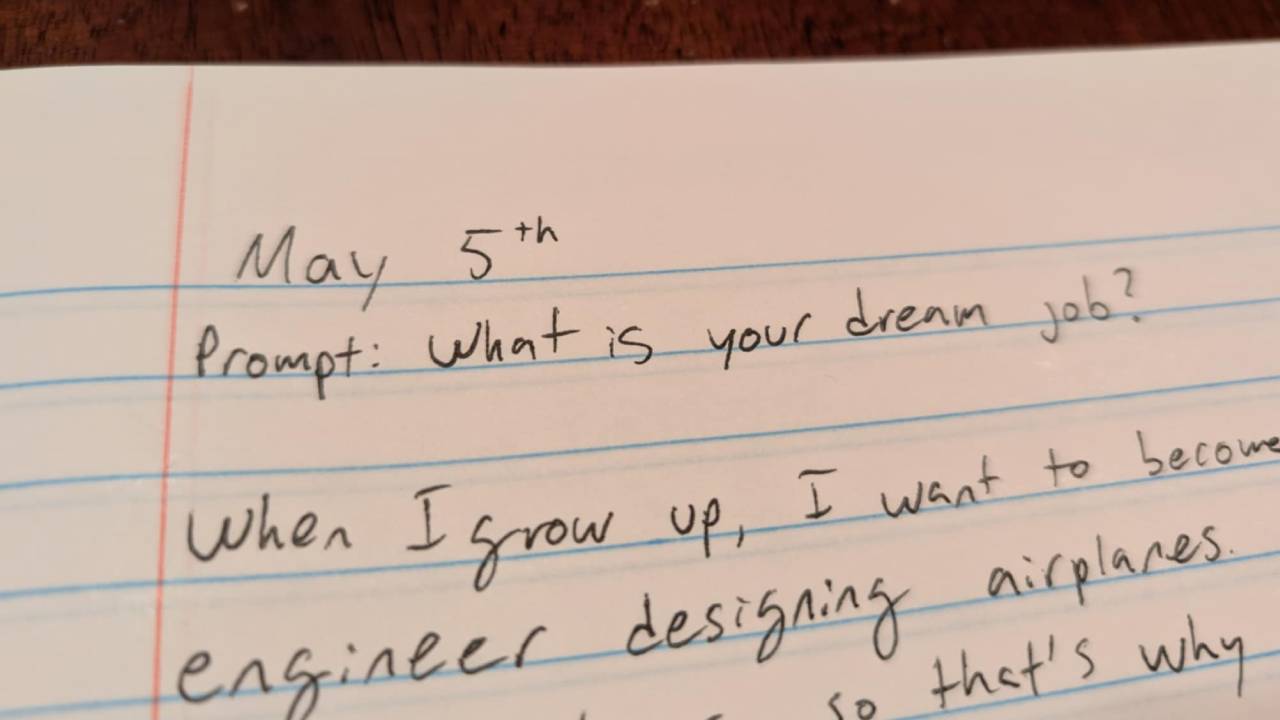About 10 years ago, I took my eldest son Noe, who is on the autism spectrum, and his brother camping with friends on Orcas Island. We spent a perfect Pacific Northwest summer day climbing Mount Constitution.
We were eating lunch at the top of the mountain when I turned my attention away from Noe for a moment to hand out sandwiches, only to find him on the other side of the observation deck. He had climbed a ledge and was dangling over, a breath away from falling, and certain death.
I have no memory of the next couple of minutes, but I must have coaxed him down safely because he is still here. I still startle awake, panicked and dizzy, when that cliff invades my dreams at night.

It was an accomplishment to get our son to age 21
Noe, who also has apraxia and epilepsy, turned 21 recently. We celebrated the simple victory that we had kept him alive to full adulthood. As the incident at Orcas Island reminds me, it’s no small feat – though it brings to mind a different kind of cliff that our family now faces.
Age 21 is when school services abruptly end and parents are left to schedule and pay for the small corners of their kids’ days. We’ve been warned about this age event since Noe was diagnosed with autism at age 2.
This cliff represents both great progress and magnificent failure. You can’t fall off a cliff if you haven’t scaled significant heights. Since The Individuals with Disabilities Education Act (IDEA) (the legislation that made education an entitlement for kids with disabilities) passed in 1975, we’ve made huge strides in helping special needs kids integrate into their communities.

At 21 the public support system for kids with disabilities ends abruptly
A generation ago, a doctor would have told us to institutionalize Noe. Just typing that sentence makes my heart hurt. By age 21, the majority of these kids, including Noe, have developed the skills to live and work in their community. But the support abruptly ends for them to do so successfully.
Only 44% of adults with an intellectual disability are in the labor force. Sixteen percent work in a sheltered workshop earning far below minimum wage, with little to no chance of moving to meaningful work. This is the statistic staring us in the face as we transition Noe to adult life.
For the first 21 years of his life, we had the anchor of the public school system, however flawed, to educate him and guide our journey. Noe has attended school full time with necessary accommodations since age 3.
We now enter a confusing maze of agencies with no guarantees
Now we enter a confusing maze of agencies that provide piecemeal vocational training and day program support, but too often place restrictions on who they will serve. Nothing is guaranteed. And starting in June, Noe’s calendar is glaringly empty. For a young person who thrives on structure and adventure, that feels terrifying.
What does Noe see for his own future?
Noe is nonverbal, so understanding his wishes is trickier than just having a conversation. As his legal guardians, his dad and I make decisions for him that reflect his preferences, actions, and behaviors.
For example, as much as his dad and I crave an empty nest, we have ruled out a group home for now. He is still very attached to us. He still snuggles with his mama and has nightly tickle fights with his dad. But we hope to work up to that goal and find him a wonderful place to practice some independence.
There must be a parachute of off this cliff we are on
He would thrive in the right employment situation. Noe enjoys repetitive work and routine. He smiles and giggles with pride when he finishes a job. There is no one in our household more efficient or adept at handling our garbage and recycling.
There is not a cleaner, more organized room in our home than Noe’s bedroom. We hope to find a job coach that offers supported employment to help Noe build on these skills and serve his community.
For us, supported employment is Noe’s parachute off the cliff. It has the promise of helping adults with special needs make true contributions in their communities. While there are upfront costs to employ job coaches, higher competitive employment rates for individuals with special needs would ultimately lower SSI and medicaid payouts. And it’s hard to put a monetary value on the benefit of having these talented and resilient individuals working among us. It’s a worthy investment for everyone.
The vision and hopes we have for Noe’s future aren’t much different than those we have for his younger brother. Asher left for college this fall to prepare for an eventual career and to take steps towards independence.
We want our son who is on the autism spectrum to have the same opportunities as his brother
I want Noe to have similar opportunities, in ways that work best for him. I want him to experience the world without being tethered to his parents. I want him to feel the satisfaction that comes from putting on a name tag, doing a job well, and earning a paycheck.
This is the truth I’m learning as we transition Noe to adulthood: In American society, we’re pretty good at serving our special needs population, as long as they are kids. It makes no sense to prepare these kids in special education programs for a future they won’t get to experience. And we won’t realize the promise of full integration until we give our special needs population the support to live as full and equal members of their community.
More Great Reading:
My Son Has Autism and I’ll Take Care of Him for the Rest of His Life

 PARENTING TIPS
PARENTING TIPS







 PREGNANCY
PREGNANCY








 BABY CARE
BABY CARE








 TODDLERS
TODDLERS








 TEENS
TEENS








 HEALTH CARE
HEALTH CARE






 ACTIVITIES & CRAFTS
ACTIVITIES & CRAFTS








 CONTACT
CONTACT ABOUT
ABOUT



